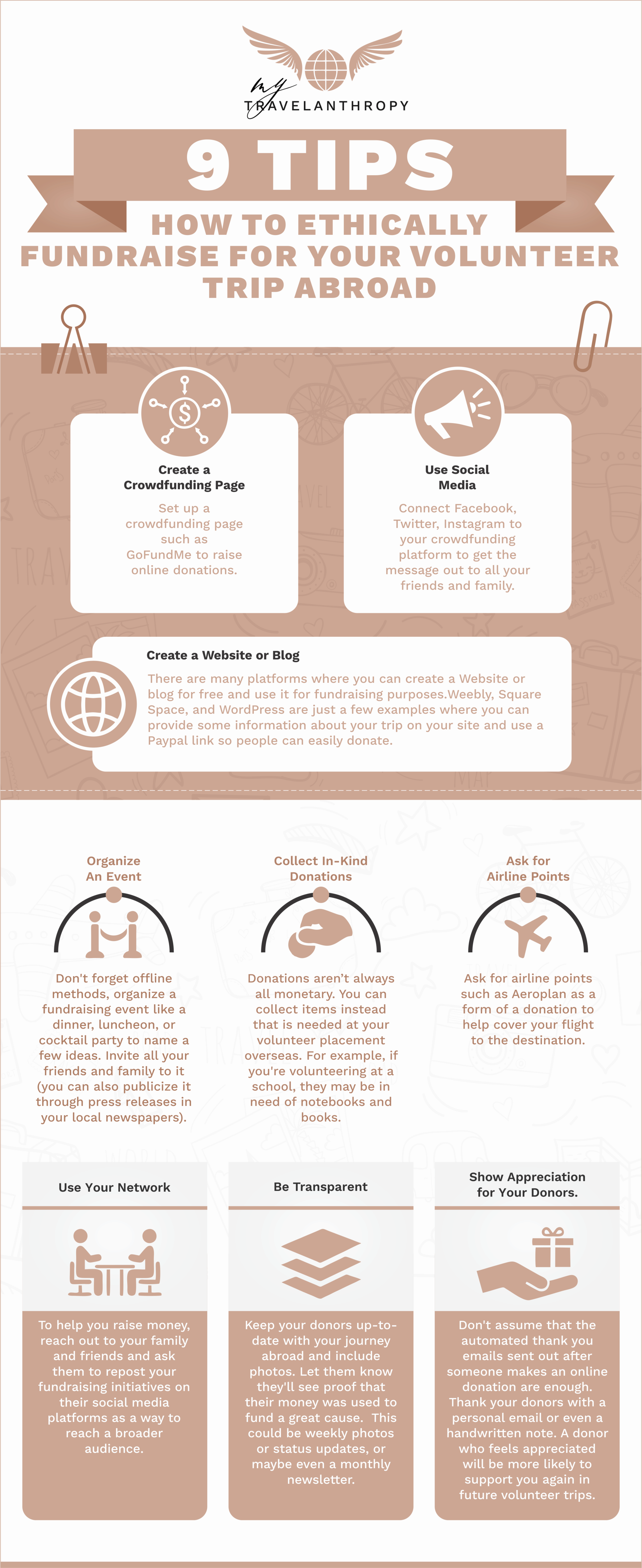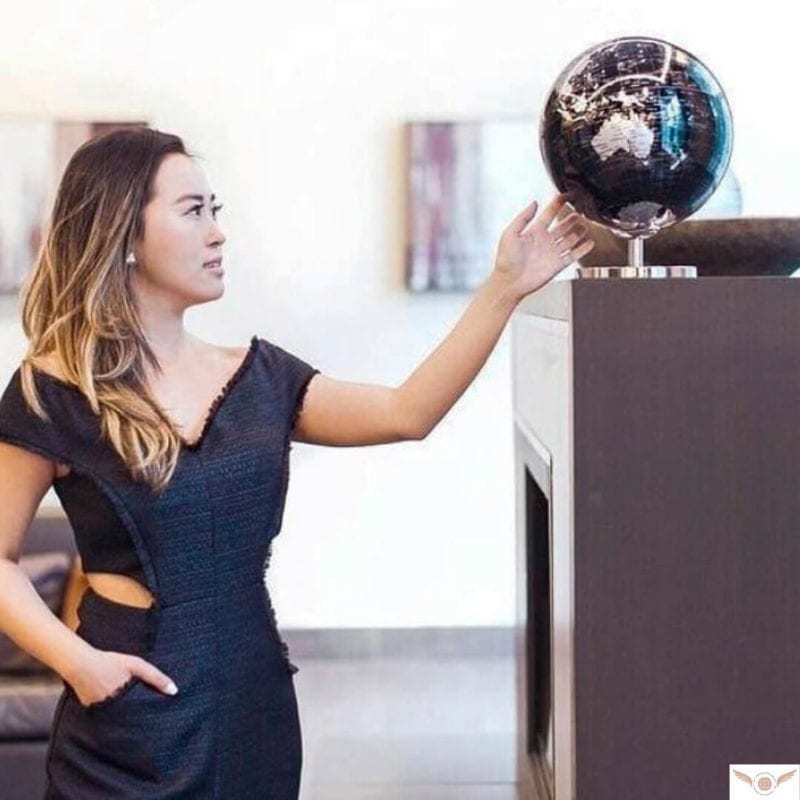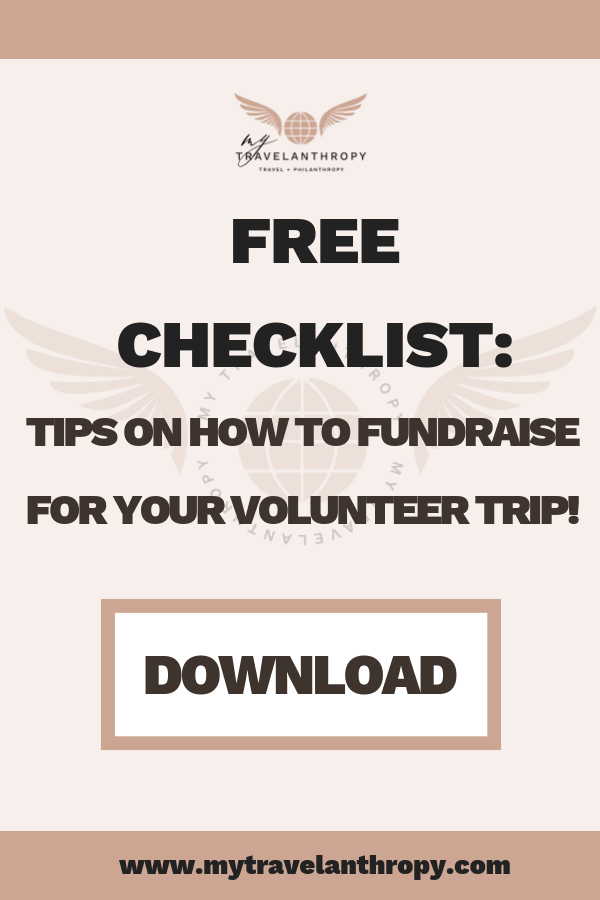One of the first items that should be on your Must Do list if you want to travel and volunteer abroad is to figure out your budget. You need to make a thorough list of all your travel and volunteer expenses such as registration and visa fees, vaccinations, travel insurance, emergency fund, spending money, etc.
Although some volunteer organizations abroad may pay for a portion of your travel expenses such as accommodation, food, airfare, or even a living stipend in exchange for your work, there are still additional costs you have to take into consideration. A tool I like to use to help estimate costs is the Expatistan – a calculator tool that allows you to compare the cost of living between cities around the world. With Expatistan you can also compare your currency to that of your destination country, which helps you get a better idea and understanding of how much money you need to bring with you.
Like any travel excursion, volunteer trip costs can sometimes add up to hundreds or even thousands of dollars if you don’t budget accordingly. If you need some assistance with funding, there are ways you can even fundraise for your volunteer trip abroad!
But before I outline my tips, below are some examples of when fundraising is done both ethically and unethically.
Table of Contents
When Fundraising Is Done Ethically and Provides Positive Outcomes
In 2014, Sarah Heaton launched a small crowdfunding campaign through JustGiving. She wanted to supplement her volunteer work at Wells of Hope Academy in Uganda. She sought to raise £400 to purchase and distribute malaria nets to local children. She informed donors that just one child sick with malaria could significantly drain the academy’s resources.
She shared her campaign on Facebook and provided photos of the academy’s children and activities. By October 19, 2014, she successfully funded her cause, beating her goal by £74. Though this campaign was small, it offers a perfect example of how to crowdfund ethically. Heaton’s campaign was clear and very specific about its mission. It provided proof and spoke to Heaton’s ambitions without any false motives or stories. It was ethical inside and out.
When Fundraising Is Done Unethically
There is a growing discontent among donors due to the lack of regulation and transparency in the crowdfunding industry. Such fears are stoked by crowdfunding scams like the one involving iBackPack. The FTC is currently investigating this Los Angeles-based startup after it raised $800,000 to fund a tech-enhanced backpack but never developed or shipped the product. And in November 2018, a New Jersey couple fabricated a story about an encounter with a homeless man and raised $400,000 through GoFundMe to support him. They then misused the funds for personal purchases.
Remember if you take advantage and abuse the trust of your donors, they are not likely to contribute to any of your future fundraising campaigns; and more importantly, they will lose faith and trust in you. You could also be depriving other worthy campaigns of funds by your unethical actions.

Tips on How to ethically fundraise for your volunteer trip:
1. Create a crowdfunding page. Set up a crowdfunding page to raise funds through online donations. This has been used to foot the bill for everything from product launches to unplanned medical expenses. In North America alone, donors have contributed $17.2 billion through various crowdfunding campaigns. Crowdfunding is one of the easiest, fastest, and most efficient ways to raise money; however, it is important that fundraising is done ethically every step of the way.
Here are a few of the most trusted crowdfunding platforms.
GoFundMe: This is one of the most recognized crowdfunding sites and is often used for personal causes. With endorsements from prominent media sources like Forbes and TIME, GoFundMe is a trustworthy platform.
Fundly: Fundly isn’t as well-known as some other platforms but it does specifically focus on social activism and community building, which is a great fit for an international volunteering campaign.
FundMyTravel: This platform is based exclusively on travel campaigns, inclusive of volunteer trips. FundMyTravel also provides access to a toolkit designed to help you get the best results.
Generosity by Indiegogo: Generosity is the brainchild of GoFundMe and Indiegogo. This platform is centered around social causes like volunteering and has the added benefit of dual name recognition.
2. Use social media. Connect Facebook, Twitter, Instagram to your crowdfunding page to get the message out to all your family and friends. Once you’ve established your campaign, you’ll likely turn to social media to court donors. The benefit of social media is that you can reach a wide audience for free, but it’s important that you act ethically.
If you are at least 18 years old, you are allowed to create a personal fundraiser on Facebook, and it’s an easy process. You can add photos and details and have your fundraising page up in minutes. Use Instagram and Twitter to send out Tweets and Instagram posts and stories with hashtags and links to your Facebook fundraising campaign.

3. Create a Website or blog. There are many platforms where you can create a Website or blog for free and use it for fundraising purposes. Weebly, Square Space, and WordPress are just a few examples of platforms for creating websites/blogs. On your site, provide some information about your trip and use a Paypal link so people can easily donate. A blog is especially useful because it’s more personal, and you can post your thoughts and dreams about a trip, as well as pictures of where you want to go; this will get your audience more engaged.
4. Organize a fundraising event. Don’t forget offline methods, organize a fundraising event like a dinner, luncheon, or cocktail party to name a few ideas. Invite all your family and friends – you can also publicize it through press releases in your local newspapers. Don’t neglect phone calls and emails. Sometimes a personal note or call works best when fundraising. Finally, you can ask for donations for your cause during the holiday season or for your birthday in place of gifts.
5. Collect In-Kind Donations. Donations aren’t always all monetary. You can collect items that are needed at your volunteer placement. For example, if you’re volunteering at a school, they may be in need of notebooks and books.
6. Ask for airline points. Ask for points such as Aeroplan to help cover your flight to the destination, and if you’re lucky it might even cover your flight back home too! Airline points can be transferred to help purchase someone’s ticket, however, policies may differ from each airline.

7. Use your network. Reach out to your network of family and friends and ask them to repost your fundraising initiatives on their social media platforms as a way to reach a broader audience. If people see someone they trust supporting a cause, they are more likely to show support for the same cause as well.
8. Be transparent. Be honest about your mission and avoid misrepresenting the work you’ll be doing. For example, don’t suggest you’ll be teaching English at a school if, in reality, you’ll be just touring the country. Keep your donors up-to-date with your journey abroad and include photos. Let them know they’ll see proof that their money was used to fund a great cause. This could be weekly photos or email status updates.
Try to ensure that every part of your campaign is clearly communicated and honest:
- Let donors know that you’re using a vetted platform (ie. if a receipt will be issued) so those who donate can rest assured you’ll use the funds to volunteer – and not go on a shopping spree.
- Share your plan to update donors about your experience. Let them know they’ll see proof that their money was used to fund a great cause.
- Focus on your reasons for volunteering. Be genuine. Simply let people know that you’re passionate about this particular cause and share that you want to make a difference.
9. Show appreciation to your donors. Don’t assume that the automated thank you emails sent out after someone makes an online donation are enough. Thank your donors with a personal email or even a handwritten note. A donor who feels appreciated will be more likely to support you again in future volunteer trips. In fact, it’s a great idea to send two thank you notes — one when people donate and a second one when you return from your trip.
The most important thing to remember when you set-up a fundraising campaign for your volunteer trip abroad is to do it ethically. It is so easy to raise money online these days that it has attracted some unscrupulous people who are dishonest about the purpose of their fundraiser or who solicit donations with no intention of using the funds for the stated purpose of their campaign.
Always be honest about the use of funds and do not fall into the trap of using donations for something other than your stated trip. These principles apply to offline fundraising as well. If you run a bake sale and come home with an envelope full of cash, it may be tempting to spend some of that money on a personal item or two, but remember that you would then be abusing the trust of your supporters and donors. You should always be able to give your donors a full accounting of how you used their money.
There are many options for funding your trip, but if you do your fundraising ethically and show your donors gratitude, you will have a network of supportive people who believe in you and in your goals for your volunteer trip abroad!

*PIN- IT! If you like this post and want to keep it for future reference, don’t forget to pin the image/s below on Pinterest!






